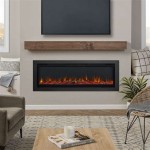Tile Over Fireplace Metal: A Comprehensive Guide
Updating a fireplace often involves considering the existing structure and its compatibility with new design elements. One common scenario is the desire to tile over a metal fireplace surround or firebox. Understanding the nuances of this process, including preparation, material selection, and installation techniques, is crucial for a successful and aesthetically pleasing outcome. This article provides a detailed guide to tiling over fireplace metal, focusing on the key considerations and best practices to ensure durability and safety.
Surface Preparation and Assessment
Prior to any tiling work, a thorough assessment of the existing metal surface is paramount. The type of metal, its condition, and previous finishes significantly influence the preparation process. Primarily, one must ascertain if the metal is structurally sound and free from significant rust or corrosion. Weakened or heavily corroded metal may require repair or replacement before tiling can commence. The presence of pre-existing paint or coatings also necessitates removal, as these can compromise the adhesion of the tiling materials.
Cleaning the metal surface is essential to remove any dirt, grease, or debris. A degreasing agent followed by thorough rinsing is generally recommended. After cleaning, the surface should be abraded to create a mechanical key for the adhesive. This can be achieved using a wire brush or sandpaper to roughen the surface. The degree of abrasion needed depends on the smoothness of the metal; smoother surfaces require more aggressive abrasion. Following abrasion, the surface must be cleaned again to remove any residual dust.
Priming is a critical step in preparing the metal for tiling. A metal-specific primer designed to promote adhesion should be applied according to the manufacturer's instructions. These primers typically contain bonding agents that create a chemical bond between the metal and the subsequent layers of thin-set mortar. It is important to choose a primer that is compatible with both the metal type and the chosen thin-set mortar. Allow the primer to dry completely before proceeding to the next stage.
Selecting the Right Materials
The selection of appropriate materials is critical for the longevity and performance of the tiled fireplace. Not all tile types and adhesives are suitable for application over metal, especially in a high-heat environment. Porcelain or ceramic tiles are generally preferred due to their durability and resistance to heat. Natural stone can also be used, but it's crucial to select stones that are less porous and more resistant to staining.
The most important material is the thin-set mortar, also known as tile adhesive. A modified thin-set mortar specifically designed for use over non-porous surfaces, such as metal, is required. These mortars typically contain polymers that enhance adhesion and flexibility, accommodating the thermal expansion and contraction of the metal. It is crucial to carefully review the manufacturer's specifications for the chosen thin-set mortar to ensure it is suitable for the intended application and heat exposure of the fireplace.
Grout selection is also important. Choose a grout that is durable, stain-resistant, and compatible with the chosen tile type. Epoxy grouts are often recommended for their superior durability and resistance to moisture and staining, especially in high-use areas like fireplaces. The grout should be sealed after installation to further protect it from stains and moisture penetration.
Installation Techniques and Best Practices
Proper installation techniques are essential for achieving a durable and aesthetically pleasing tiled fireplace. Begin by dry-fitting the tiles to determine the layout and ensure even spacing. This allows for adjustments to be made before the thin-set mortar is applied.
When applying the thin-set mortar, use a notched trowel appropriate for the size and type of tile being used. The trowel should be held at a 45-degree angle to the surface, creating ridges of mortar that will provide maximum adhesion. Apply the mortar in small sections to prevent it from drying out before the tiles are set. Press each tile firmly into the mortar with a slight twisting motion to ensure full contact and proper bonding.
Use tile spacers to maintain consistent grout lines. Grout lines are not only aesthetically pleasing but also provide room for expansion and contraction, reducing the risk of cracking. After the thin-set mortar has cured according to the manufacturer's instructions, remove the spacers and apply the grout. Work the grout into the joints using a grout float, ensuring that all gaps are filled. Wipe away excess grout with a damp sponge, being careful not to remove grout from the joints. Allow the grout to cure completely before sealing.
Consider incorporating expansion joints if the tiled area is large. These joints accommodate thermal expansion and contraction of the metal and tile, preventing cracking. Seal all edges of the tiled area with a flexible sealant to prevent moisture penetration. Regularly inspect the tiled surface for any signs of cracking or grout deterioration and address any issues promptly to prevent further damage.
Installing Ceramic Tile Over Black Metal Fireplace Surround Advice Forums John Bridge
Tiling Over Fireplace Metal Box Surround Help Ceramic Tile Advice Forums John Bridge

How To Tile A Fireplace Even If It S Brick The Handyman Daughter
Right Kind Of Thinset To Attach Tile Metal Fireplace Ceramic Advice Forums John Bridge
Tiling Around A Prefab Fireplace Ceramic Tile Advice Forums John Bridge

25 Metal Clad Fireplaces For A Wow Effect Shelterness

A Step By Guide To Fireplace Refacing Diy Family Handyman

Metallic Porcelain Tile Fireplace Contemporary Living Room

A Built In Fireplace With Darkened Steel Sheets Over It And Faux Stone Under Feels Ver Contemporary Designs Metal

A Mosaic Tile Fireplace Surround Art Renovation
Related Posts








